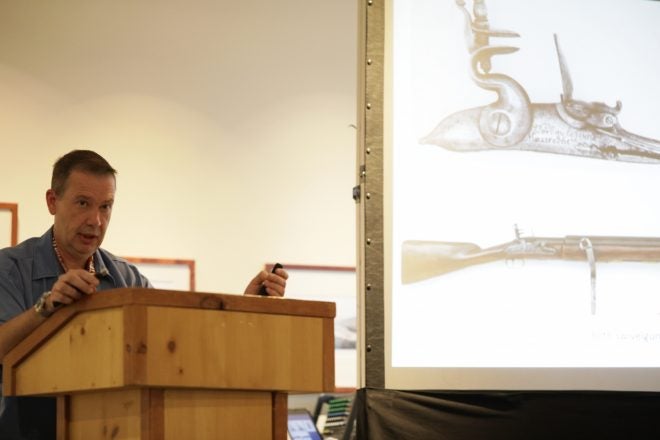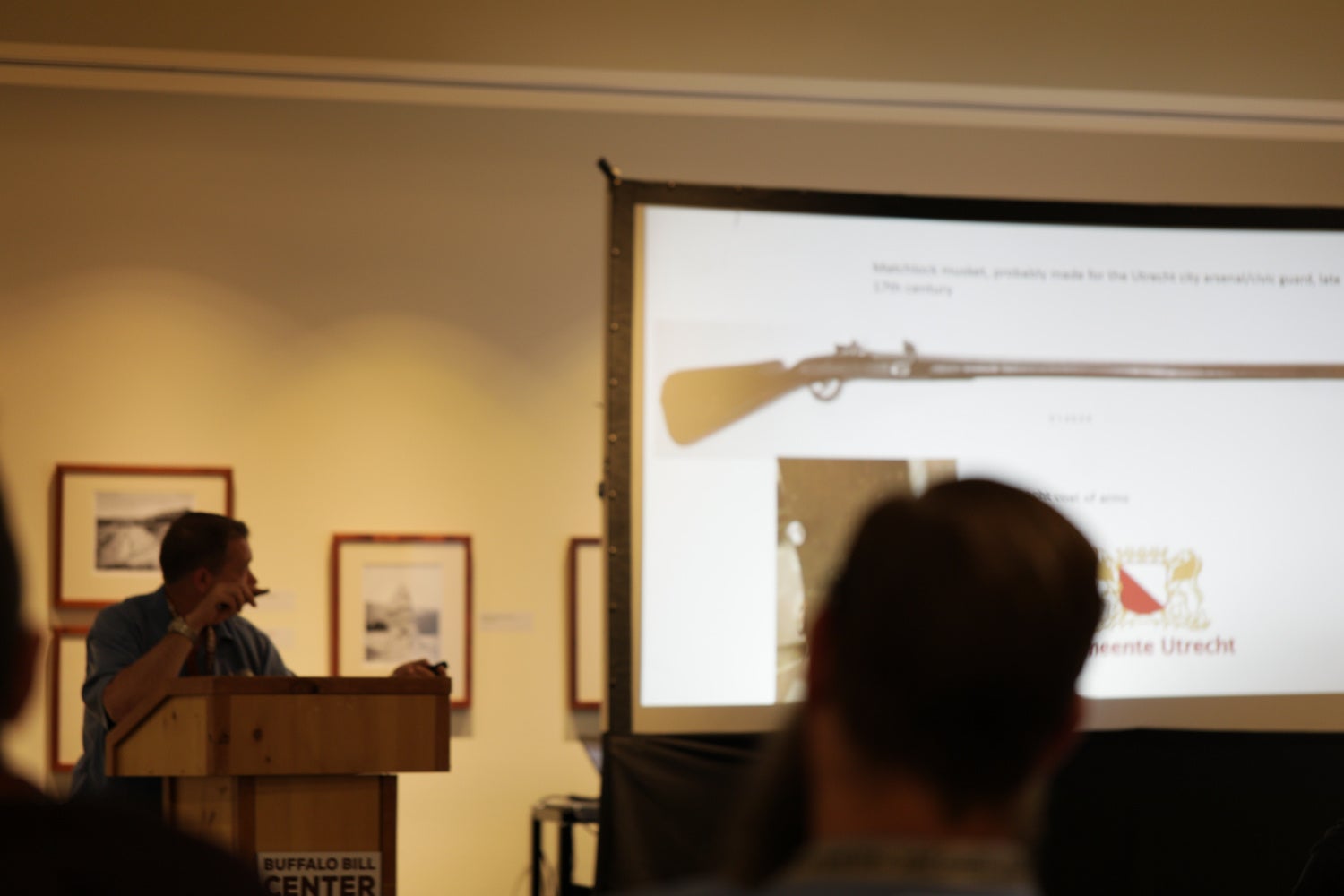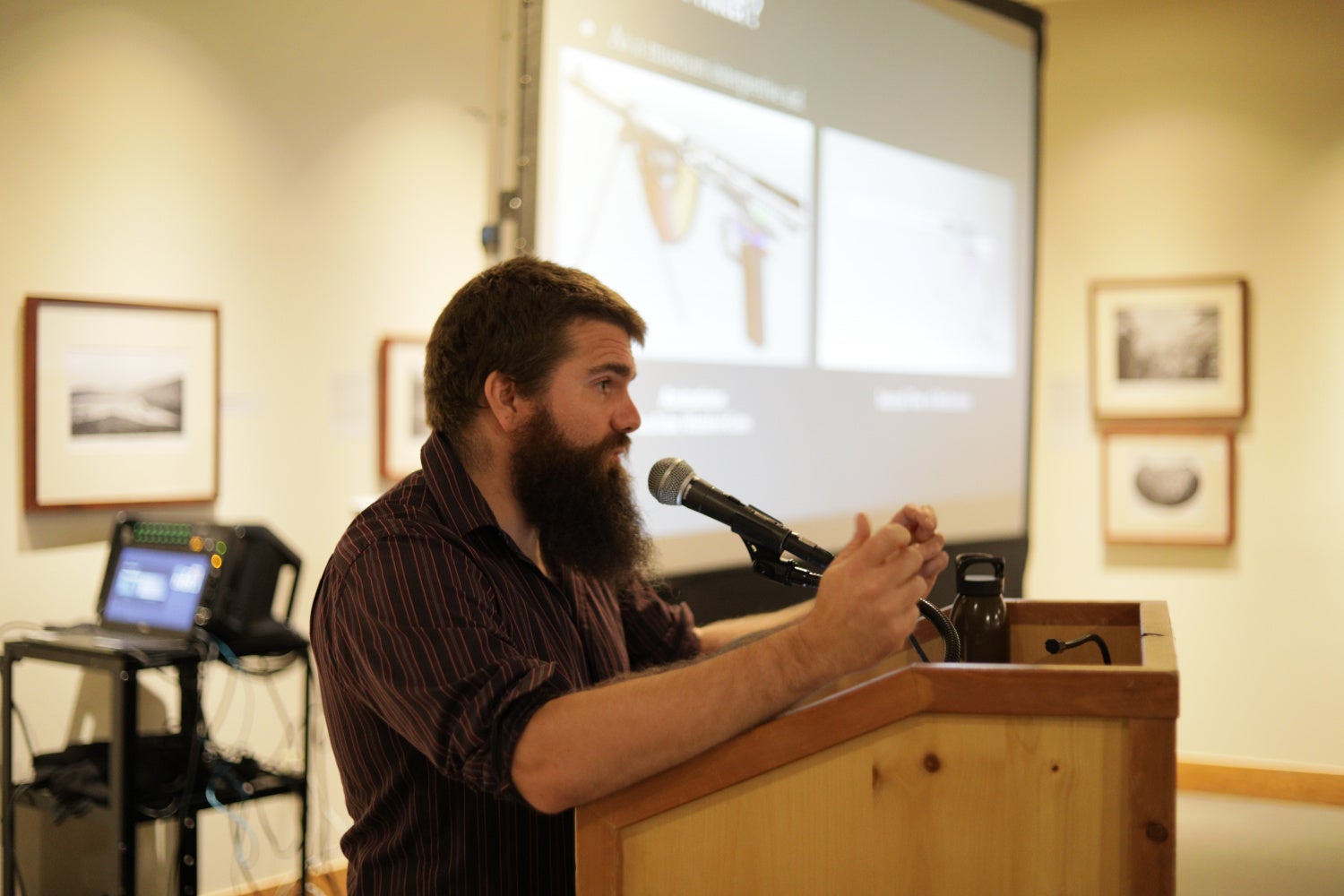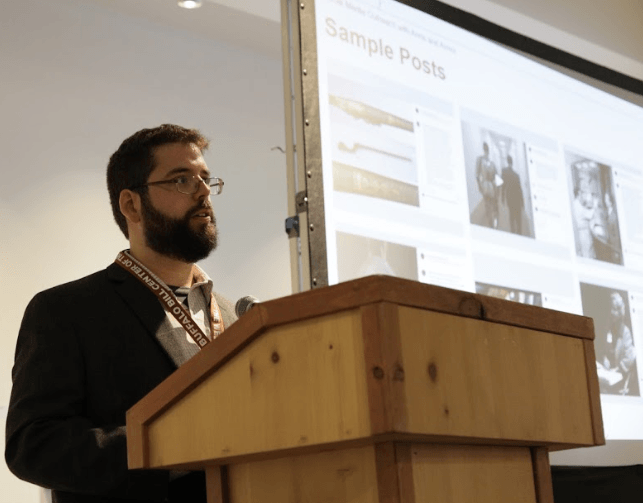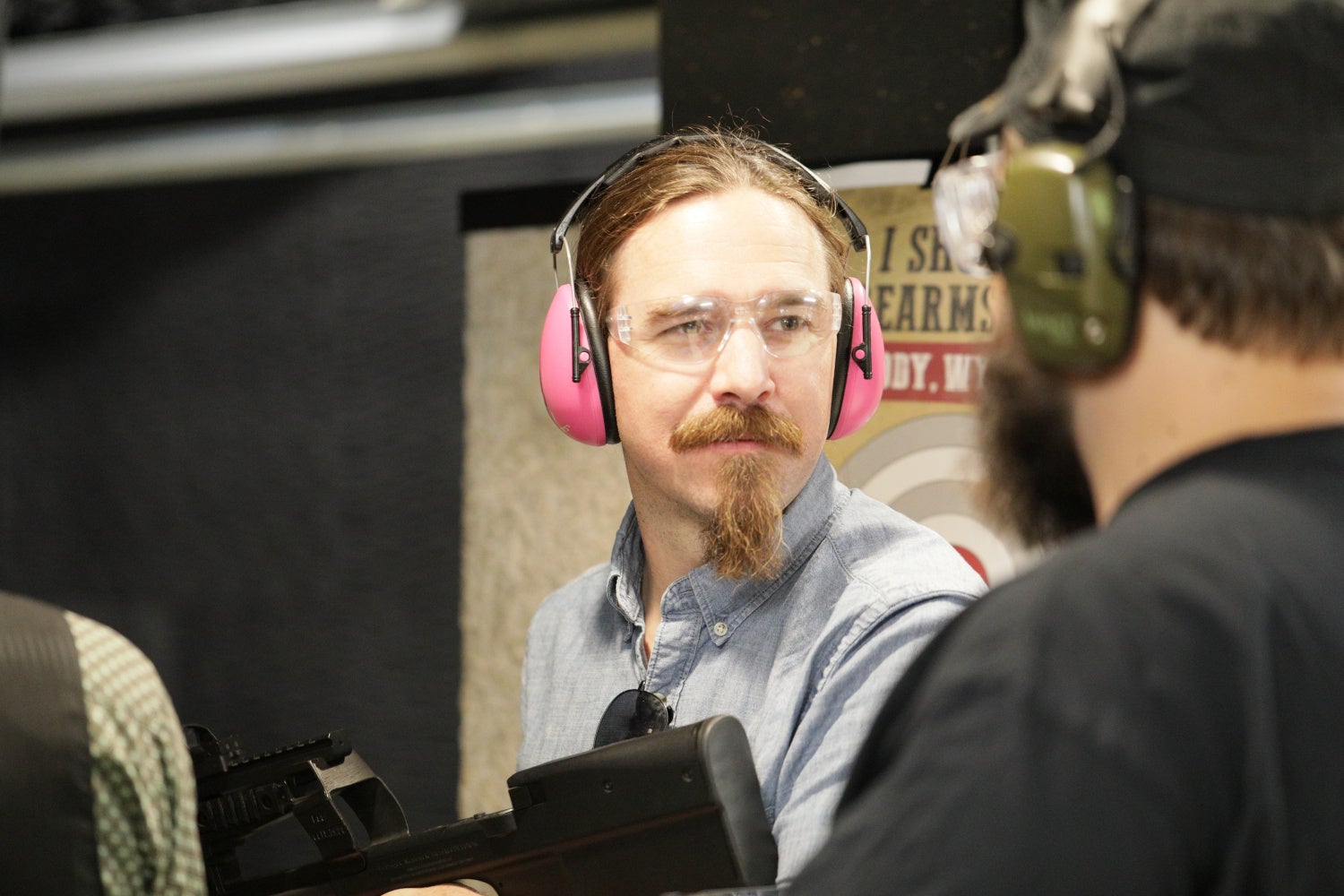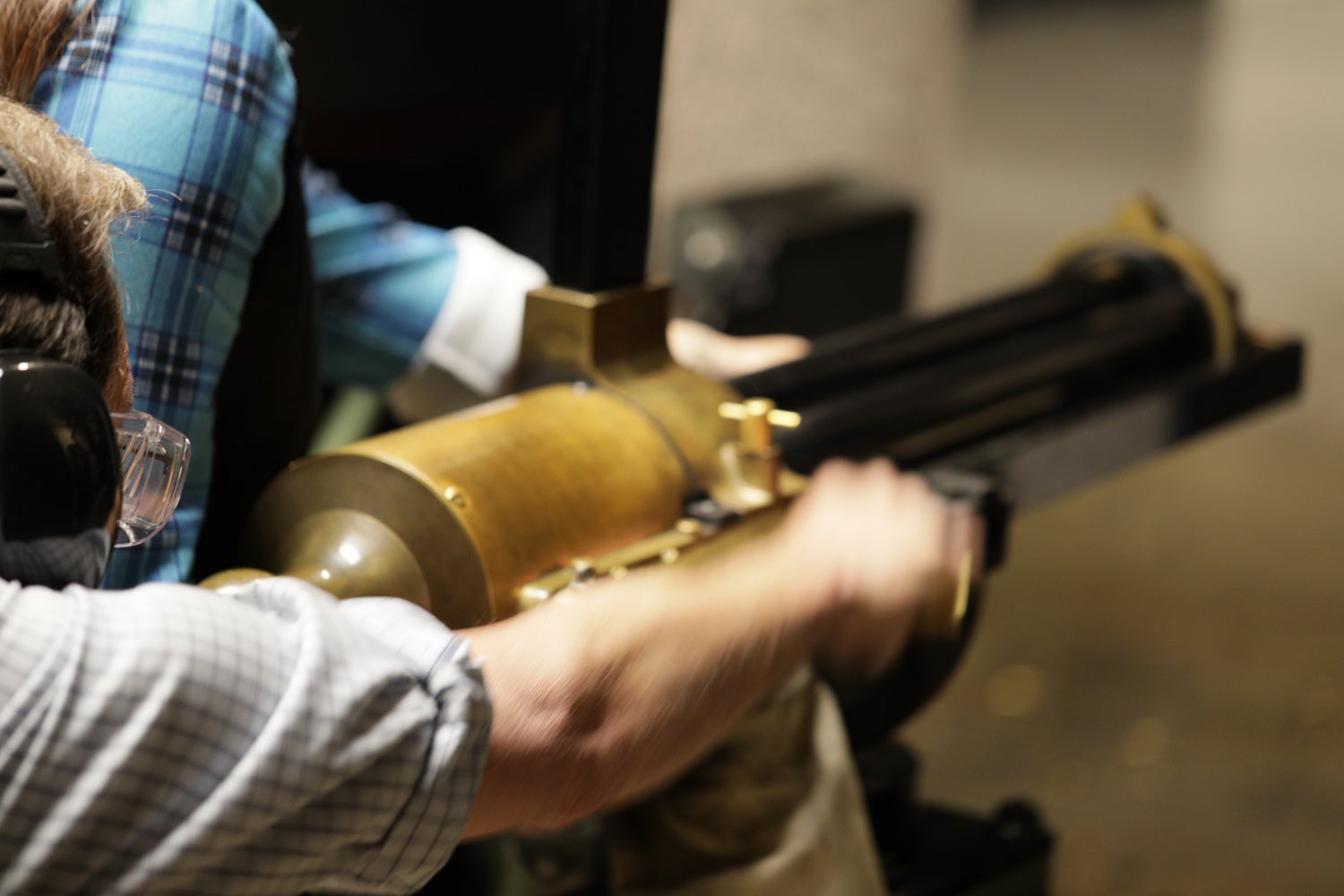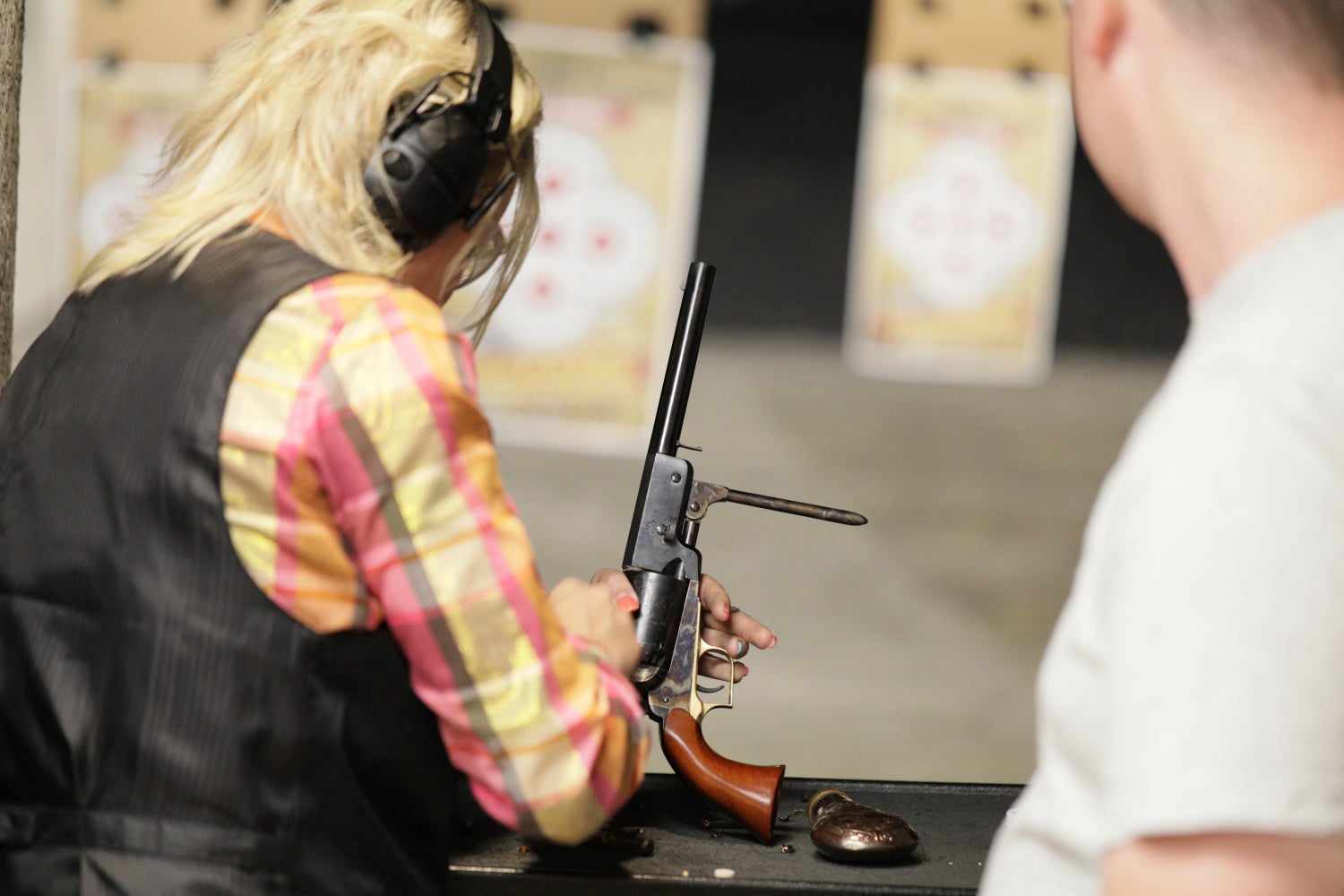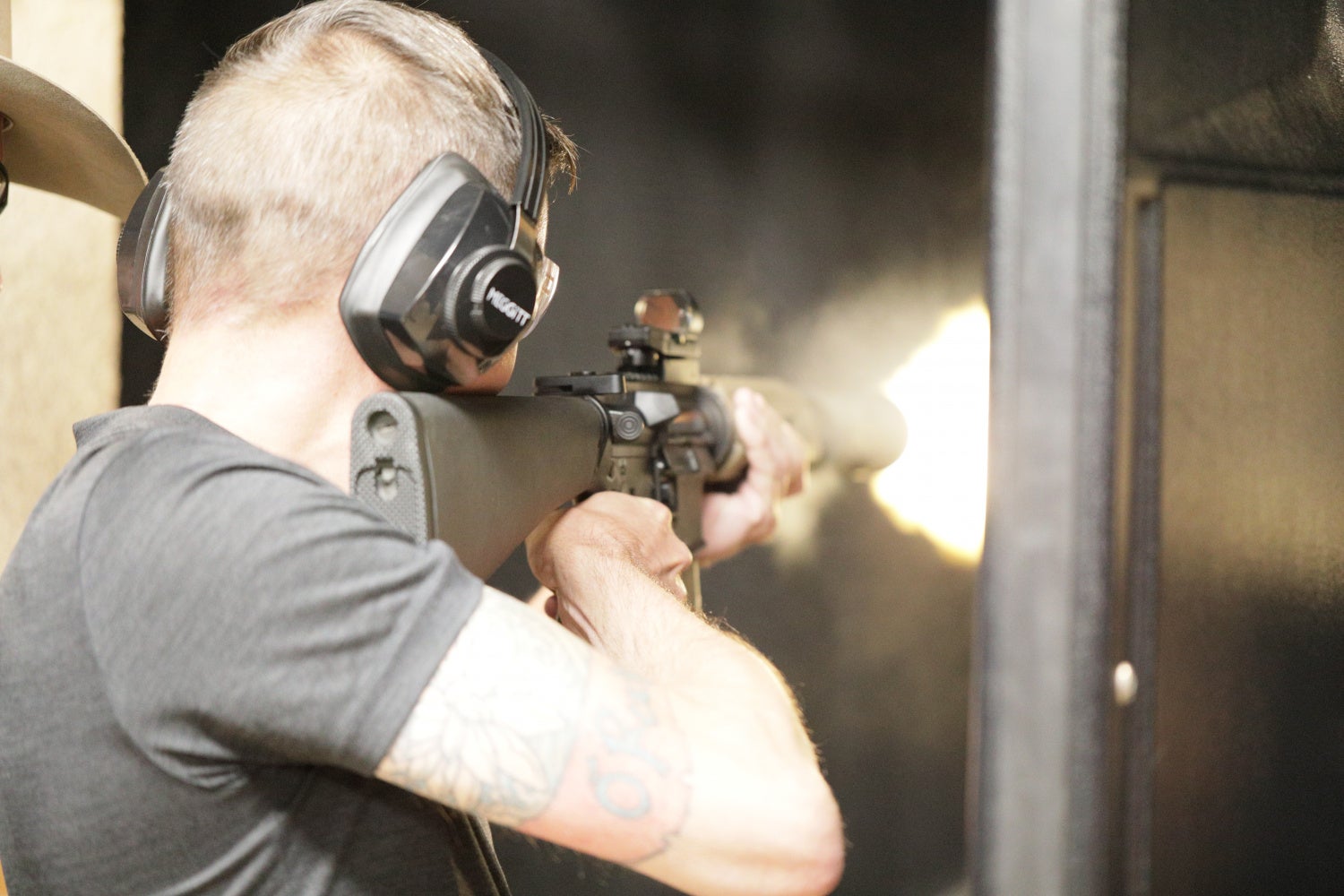This year the Cody Firearms Museum hosted the third annual Kurt Swanson Bucholz Arsenals of History Symposium in Cody, Wyoming. We saw the gathering of many historians, researchers, and representatives from a wide range of museums throughout the world. All congregating together to discuss such topics as to how we research and interpret firearms history to looking forward in the digital age with how to classify small arms lexicons and even incorporating video games into the museum experience.
New Research Sources for Old Muskets – Mathieu Willemsen (Dutch National Military Museum)
Curator Mathieu Willemsen discussed using different research sources for investigating older Dutch firearms, delving into the differences between them, strengths, weaknesses, then points to look out for when researching in different languages. This led to a discussion within the group about how to research in older media. One large problem is that text recognition software needs to be ‘trained’ or adapted to optically read older fonts and forms of script that aren’t used today. Mathieu pointed this out by showing some contracts with the Dutch Army from the 16th, 17th, and 18th Centuries where you need to really dig in the details. On top of this, we discussed translation issues between languages. For example in Dutch, there is only one word for a rifle, whereas in English we could have musket, musketoon, rifle, smoothbore, etc… but Dutch doesn’t make this distinction.
He then went on to mention some of the interesting finds that he has come across in the course of his work examining early Dutch contracts. He found out that some of the Dutch defense forces were still issuing out matchlocks in 1742, many years after flintlock rifles and muskets had been adopted as service arms throughout Europe. Even so, we saw many examples of matchlocks converted into flintlocks, in service alongside other flintlock muskets. Some contracts stipulated rolling balls versus ramming balls being used in loading processes. Other contracts stipulated that rifles have slings whereas earlier ones didn’t mention anything about slings.
3D Printing and Gun Museums- Scott Gausen (Springfield Armory NHS), Corey Wardrop (Institute of Military Technology)
Unfortunately, Corey Wardrop couldn’t make the symposium but his discussion partner Scott Gausen was able to present on his side of the discussion about 3D Printing in museums. Scott got into a very in-depth and fascinating lecture about many of the aspects of using 3D printers in a museum setting and specifically while interacting with the public. He could, for example, print out polymer Minie balls that he could show differences in designs to school children coming through the museum without having to actually pull Minie balls that were over a hundred years old and composed of lead. Having the ability to simply print these sorts of items opens up a world of possibilities for museums. Usually short on budgets, it allows curators to make interactives like what Scott is doing, or even form parts for display cases in order to restore an object.
Some of the issues that Scott found was selecting the right kind of 3D printer, and then the right kind of 3D scanner at a reasonable budget that the Park Service would support and approve. But the biggest point that he wanted to harp on was the technical aspect of 3D printing in that it really isn’t as simple as pressing a button and having the machine spew out exactly what you see on the screen. The complexities and learning curves are significant for someone who has no knowledge of working with 3D printers.
Social Media Outreach with Arms & Armor- Sean Belair (Metropolitan Museum of Art)
Sean gave a fascinating talk about the New York’s Metropolitan Museum’s Department of Arms & Armor’s social media campaign. The Department was able to grow its social media presence on Facebook and Instagram to well over 20,000 followers apiece. This was accomplished by using a social media committee of four people that rotated within the department employees. Posts get sent in by various employees, picked, captions made, and scheduled to post online. One point that Sean harped on tremendously was that the posts need to have curatorial input as opposed to being only worked on by a public relations or marketing department. This is necessary to maintain the accuracy and correct captions of the posts so as not to incur any large mistakes.
Probably the biggest takeaway from Sean’s talk is that for museums and a number of other professionals, the social media imprint needs to be taken seriously. Organizations cannot afford to offload social media responsibilities on the youngest intern because older staff have never heard of Facebook or Twitter. Social media is dynamically changing the way organizations not only market, but also how images and impressions are shaped in society.
Cody Shooting Experience
Attendees were able to get some trigger time at the Cody Shooting Experience down the road from the museum. I’d certainly recommend visiting the rental range for any visiting shooters (if you’re going to Yellowstone National Park, hint, hint) that might not be able to get their hands on some of the older firearms such as a Gatling Gun, flintlock muskets, Schofields, black powder revolvers, or even a Sharps carbine.
 Your Privacy Choices
Your Privacy Choices
